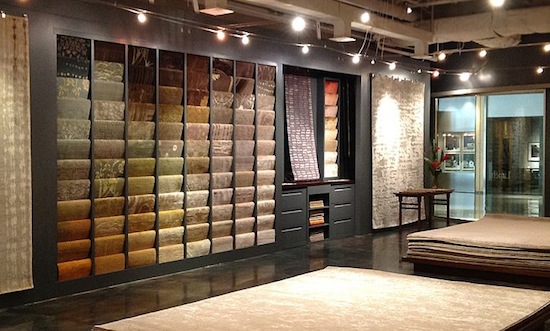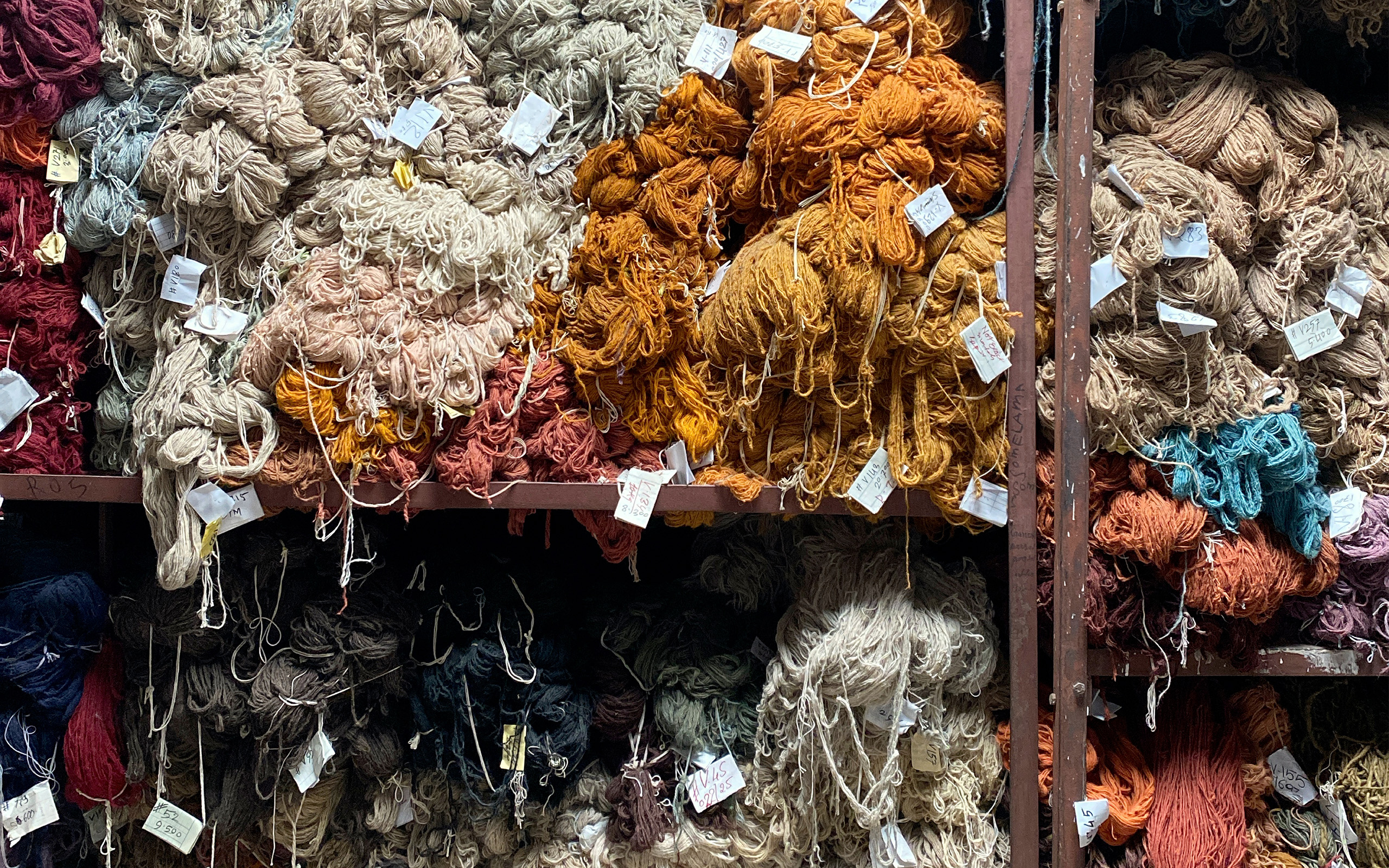In 1945 Robert Lewis wrote “My God what have we done?”, in 1981 the Talking Heads released “Once In A Lifetime” and sung “My God what have I done?” and in 2001 Lapchi started production of carpet samples, and I now ask “My God what have they done?”
Let’s begin with a little narrative.
I clearly remember the day in 2003 (not the date, but the day) I first saw a sample from Lapchi. They had shipped a sample to the showroom I managed in Cleveland, Ohio (It Can be viewed here. Please note the website has not been updated since 2005) and although the sample was nothing extraordinary in terms of carpet design, my first thought was “What is this?” The sample itself, the accompanying literature, and the superb help of the early Lapchi staff, painted a picture not of what it was, but of what it could be. It could be just as I saw in the sample, it could also be any size, shape, colour, et cetera, I or my customer wanted it to be. It could be, within technical bounds, anything I could possibly want it to be. And thus my Lapchi experience began. For you see, just as Starbucks doesn’t sell coffee, Lapchi wasn’t selling carpets. They were selling the experience of having exactly what I, and more importantly from a sales perspective, what my customer wanted, and they did it masterfully.
How did they master the experience?
In all fairness credit does need to be given where credit is due. Lapchi, to borrow copy I wrote for them “launched a revolution”, and although it is marketing, I do believe it to be true. They took, what had been until that point, the profitable yet secondary maligned custom component of rug manufacturing, and made it preferential to pile sales. They listened to what customers wanted and gave it to them. Customers wanted any size, shape, colour, et cetera and Lapchi gave it to them. Customers wanted to own something unique, and Lapchi gave it to them. Customers wanted not to pay up-charges for custom work, and Lapchi gave it to them. Customers wanted the process to be easy, and Lapchi gave it to them. And since Lapchi started giving these things to customers, customers have embraced Lapchi and their experience.
At the core: Samples
The sample is the singular physical manifestation of the experience. Since the AtelierLapchi Concept took the sample and the powerwall (to borrow a term) display to showrooms across the market, customers have come to understand, if not necessarily consciously, that everything that is behind Lapchi – customization and the ability to deliver it to their wants – is expressed when a sample is presented. Not just a Lapchi sample though. Any sample. And therein lies the flaw of producing samples for those who are attempting to mimic Lapchi.
AtelierLapchi in Los Angeles
So, what have they done?
Lapchi has conditioned customers to expect everything they offer every time they see a sample. For other importers offering samples, this may or may not be a problem. If for instance you offer everything the Lapchi experience offers, then you are on equal footing, winning the sale on aesthetic and salesmanship. If however, you do not offer the same experience, you’ve created disappointment in the customer’s mind, and you are already facing an uphill battle. The distinction is not as apparent between Lapchi and say the other Nepali/Tibetan manufactures, as it is say between all Nepali/Tibetan manufactures and the rest of the world of rugs in its entirety, baring one exception, that of custom tufting. The Lapchi experience was modeled on what Nepali/Tibetan production can and is doing. Translating that model to other countries, other techniques, other sets of technical limitations, and other aesthetics, as some importers are attempting, is prone to difficulties. Customers disappointed by these difficulties will not purchase rugs.
Epilogue
For those who can, are or will offer everything the Lapchi experience offers, or for that matter, more than they offer, I say make samples and may the best aesthetic win. For those who cannot duplicate the experience, or better it, for whatever reason, I say do not make samples. I am not advocating giving up though. Learn from Lapchi, look at yourself, your products, your strengths, your weaknesses, and build your own experience. What do or can you do best? Who is your customer? What do they want?
Just as Lapchi realized the “wants” of it’s customers, we all must look at what our customers want. For the truth be told, no-one needs a rug or carpet, it is not a necessity, not a need, but a “want”. Realize your customer may not be the same as a Lapchi customer, and cater to their wants, not the wants of the latter.
Post Script
My recent post regarding Metro Market Week, has stirred a little discussion in the world of rugs, and speaking directly to the point I make about about listening to your customers, I will mention that Mr. Behrooz Hakimian of Hadji-Jalili Revivals called me to discuss why I listed the ORICA dinner under the bad category. We had a wonderful productive conversation, and Mr. Hakimian expressly said that he “wanted to know why so they could improve”, and invited me to visit him at ORICA so he can show me it is worth the trip. It is an offer I intend to accept.


